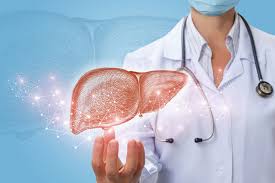A CT scan, also known as a computerized tomography scan, is a diagnostic medical imaging technique that uses X-rays and computer technology to create detailed images of the body’s internal structures. CT scans are commonly used by medical professionals to diagnose and monitor a wide range of medical conditions, including injuries, infections, and tumors. In this article, we’ll take a closer look at what a CT scan is, how it works, and why it’s an essential tool in modern medicine.
What is a CT scan?
A CT scan is a medical imaging technique that uses X-rays and computer technology to create detailed images of the body’s internal structures. During a CT scan, the patient lies on a table that moves through a ring-shaped machine called a CT scanner. The scanner uses a series of X-rays to create cross-sectional images of the body, which are then compiled into detailed 3D images by computer software. You can find the Best CT scan near me. CT scans are a powerful tool in modern medicine
CT scans are commonly used to diagnose and monitor a wide range of medical conditions, including:
1. Bone fractures2. Internal bleeding3. Tumors and other masses4. Blood clots5. Lung conditions, such as pneumonia and lung cancer6. Abdominal and pelvic conditions, such as kidney stones and appendicitis
How does a CT scan work?
A CT scan works by using X-rays to create detailed images of the body’s internal structures. Digital X-ray are a type of electromagnetic radiation that can pass through the body and create an image on a detector on the other side. During a CT scan, the X-ray detector and the X-ray tube rotate around the patient, taking multiple X-ray images from different angles.
The X-ray images are then processed by a computer to create detailed cross-sectional images of the body. These images can be viewed on a computer screen or printed out for further analysis.
In some cases, a contrast agent may be used during a CT scan to help highlight certain areas of the body. Contrast agents are substances that are injected into the patient’s bloodstream, swallowed, or given rectally or vaginally. These substances can help highlight blood vessels, organs, or other structures, making them easier to see on the CT scan.
Why are CT scans important in modern medicine?
CT scans are an essential tool in modern medicine because they provide detailed, non-invasive images of the body’s internal structures. This allows medical professionals to diagnose and monitor a wide range of medical conditions without the need for invasive procedures.
Some of the key benefits of CT scans include:
1. Accurate diagnosis: CT scans can provide highly accurate images of the body’s internal structures, making it easier for medical professionals to diagnose and treat a wide range of medical conditions.
2. Non-invasive: Unlike many other diagnostic techniques, such as biopsies and exploratory surgery, CT scans are non-invasive and do not require any incisions or anesthesia.
3. Speed: CT scans are a fast and efficient way to obtain detailed images of the body’s internal structures, with most scans taking only a few minutes to complete.Versatility: CT scans can be used to diagnose and monitor a wide range of medical conditions, from bone fractures to tumors and other masses.
What are the risks of a CT scan?
Like all medical procedures, CT scans do carry some risks. The most significant risk of a CT scan is exposure to ionizing radiation, which can increase the risk of cancer over time. However, the amount of radiation exposure from a single CT scan is generally considered to be low, and the benefits of the scan usually outweigh the risks.
In some cases, patients may have an allergic reaction to the contrast agent used during a CT scan. Symptoms of an allergic reaction may include hives, itching, and difficulty breathing. However, these reactions are rare and can usually be treated quickly and effectively.
In rare cases, serious complications may occur during or after a CT scan. These complications can include:
1. Kidney damage: Some contrast agents used during CT scans can damage the kidneys, particularly in patients with pre-existing kidney problems. However, this is rare and can usually be avoided by ensuring that the patient is well-hydrated before and after the scan.
2. Radiation sickness: In rare cases, exposure to high levels of ionizing radiation during a CT scan can cause radiation sickness, which can lead to nausea, vomiting, and other symptoms. However, this is extremely rare and usually only occurs in patients who have received very high doses of radiation.
3. Pregnancy complications: Women who are pregnant or may be pregnant should avoid CT scans if possible, as the radiation can potentially harm the developing fetus. However, in some cases, the benefits of a CT scan may outweigh the risks, and the procedure may be performed with appropriate precautions.
To minimize the risks associated with CT scans, it’s important for patients to inform their healthcare provider of any pre-existing medical conditions, allergies, or pregnancy before undergoing the procedure. Patients should also be sure to follow any pre-scan instructions, such as fasting or drinking plenty of fluids, as directed by their healthcare provider.
Conclusion
CT scans are a powerful tool in modern medicine that allow medical professionals to diagnose and monitor a wide range of medical conditions with high accuracy and minimal invasiveness. While CT scans do carry some risks, these risks are generally considered to be low, and the benefits of the procedure usually outweigh any potential complications. If you are experiencing symptoms that may require a CT scan, be sure to discuss the procedure with your healthcare provider to determine whether it is appropriate for your individual needs and circumstances.





